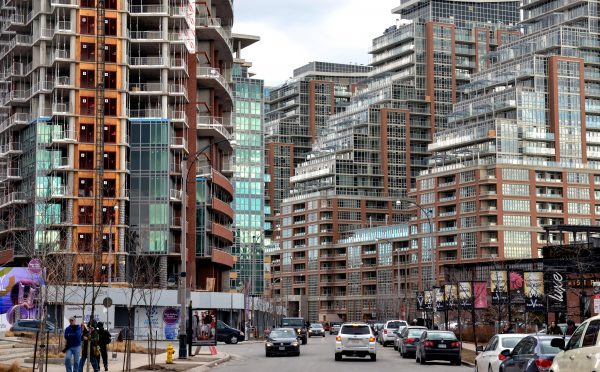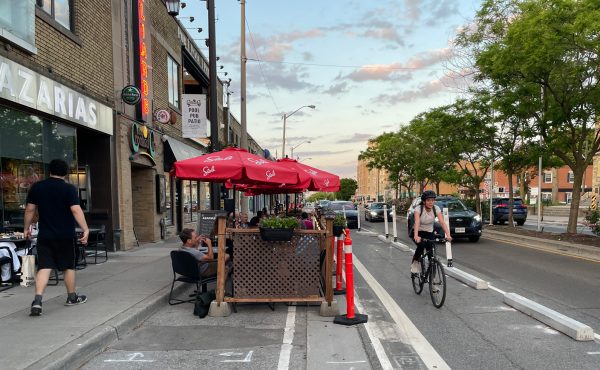Premier Doug Ford says weakening planning law will get more housing built and that will solve our affordable housing crisis. This appeals to people who believe that housing costs are primarily a function of supply and demand. Prices fall when supply grows. Thing is, housing economics don’t work that way and never have.
Land speculation is as old as the hills. Wealthy people have always been placing bets that land prices will keep rising and they can resell at a profit. In the meantime, the rents paid on the land provide a tidy revenue stream. Their profit-taking doesn’t reflect any productive investment. It does increase the cost of land and what you and I will pay to live on it.
Some of us work for a living; others invest. Those who invest, protect and expand their wealth by ensuring that the rate of return on their investments (their profit) is bigger than the rate of growth of the overall economy. One of the leading economists of our time, Thomas Piketty, summarizes this as “r > g,” where “r” is the rate of return for investors and “g” is the overall growth of the economy.
When investors are making money faster than the economy grows, their share of the economy gets bigger. The rich get richer and the rest of us fall behind. This matters most in housing.
Valued at over $US160 trillion, the global housing market is the biggest financial object in history. It is the biggest part of most nations’ GDP. New housing construction by itself is the leading industry in the GTA and has been for most of my lifetime.
The world’s biggest river of money attracts a lot of operators looking to divert a little of the flow their way. If you pay rent, or have a mortgage or a line of credit against your home, every month you are paying investors.
Over the last few decades, the nature, scale, and impact of land speculation have changed. A combination of financial de-regulation, the growing concentration of wealth (as noted by Piketty), and the arrival of light-speed digital money-movement has morphed speculation into something entirely new: the financialization of housing.
In a financialized housing market, you are now paying multiple layers of investors through new instruments like mortgage–backed securities and real estate income trusts. In a financialized housing market, new global landlords swoop into up-and-coming markets anywhere in the world, land flips and flips and flips through numbered companies, and a wide array of investors back condo developers for big short term profits.
That all sounds abstract. Here’s a way to understand financialization more viscerally (I am stealing this explanation from economist Hugh MacKenzie):
Imagine that each of us who works to pay rent or a mortgage is chugging around a race track every month. Up in the stadium, thousands of investors bet on whether or not we get over the finish line. They are the people who own the financial instruments that underpin the private housing market. Every time we make a lap, we pay them and they profit. Thanks to the dynamic of r > g, those of us labouring around the track have to pay more and more for the same amount of home. Each lap gets harder. Because those investments are speculative, if enough of us fail at the same time, the global economy crashes.
The financialization of housing through mortgaged backed securities led to the global financial crisis of 2008. Banks collapsed. Trading houses like Goldman Sachs vanished without a trace. Entire countries went into default. Jobs vanished. Personal bankruptcies soared. A good argument can be made that this contributed to the emergence of the politics of Trump, Brexit, and Ford.
That’s financialization and it has nothing to do with the simple supply and demand curves taught in high school. It makes housing more expensive. It increases the concentration of wealth. It is an insanely risky way to run the biggest economic sector in the world.
What to do? The obvious answer is to take the stadium full of investors out of the picture. We need to replace them with social housing. Think Medicare, but for housing. This sounds like a tall order, but we have ground to build on. Until 1998, our federal government was a big investor in social housing. A generation ago, the federal government contributed to Toronto’s public housing company City Home. It was known for high quality housing and building strong communities. In the 1970s, the federal government helped build Toronto’s St. Lawrence neighbourhood, which to this day is a model of what mixed income housing and the co-operative housing movement can do.
Other places didn’t leave this path the way we did. In Berlin, which already has a thriving social housing sector, they are looking at expanding their portfolio by expropriating privately-owned apartment buildings. Glasgow has a rich mixed-income system that offers choice, flexibility, and a high degree of tenant inclusion in decision making. Vienna houses an astonishing 60% of all inhabitants in social housing.
These, and many other cities, provide social housing options that include people from a wide range of incomes. It’s the mix that makes them work. It prevents the concentration of poverty, and generates enough rent to be self-sustaining, even profitable. Here, we have fallen into the trap of thinking that social housing is only for the poorest among us. Because they represent a minority with little social power, we neglect their homes and neighbourhoods. If we make social housing the norm and not the exception, the political will to make it high quality and attractive will be an inevitability.
But, what about the cost? Here’s the good news: that stadium full of investors is not wrong. Housing is a good investment. If we build up the socially-owned, mixed-income portfolio, the owners (us) will get the benefit. Instead of helping the wealthy, we will help each other. Housing will pay for housing.
Gord Perks is the city councillor to Parkdale-High Park. Follow him on twitter at @gordperks.
photo by Mary Crandall





8 comments
A few points:
“Prices fall when supply grows.”
Prices fall when supply grows when all else remains equal (“ceteris paribus”). The casual observer will note that housing prices in Toronto have not fallen despite a steady increase in supply. This is of course because all else has not remained equal. Prices are a function of supply and demand. Prices rise as demand grows, all else equal. As much as we’re building, we’re not building nearly enough to accommodate everybody who would like to live in the city.
“R > G”
Perks references Piketty’s now infamous “r > g”. Unfortunately, his argument gets the causality reversed. The increased rate of return to capital is not driving housing price increases; rather, housing price increases are ~wholly responsible for the increased rate of return to capital. This was established by Matthew Rognlie in his 2016 paper, “Deciphering the Fall and Rise in the Net Capital Share: Accumulation or Scarcity?”
Referencing Glaeser, Gyourko, and Saks (2005) and Quigley and Raphael (2005) Rognlie notes that “restrictions on land use and residential construction inflate the cost of housing.”
Similarly, in his review of Piketty’s Capital, Lawrence Summers lists “an easing of land-use restrictions that cause the real estate of the rich in major metropolitan areas to keep rising in value” as one of the two “most important steps that public policy can take with respect to wealth inequality”.
“That’s financialization and it has nothing to do with the simple supply and demand curves taught in high school.”
Financialization is a bit of a muddled concept but has been used by Perks and other market-skeptics to describe the process by which an asset becomes a store of value in an increasingly deep and liquid market. Key to that process is predictable scarcity. Financialization then has everything to do with supply and demand. Housing is an attractive investment precisely because its supply is constrained.
I don’t understand why councillor Perks presents building new public housing as an alternative to increasing the supply of housing. Why not do both? They can be complimentary. Increasing the housing supply would increase property tax revenue, and make more efficient use of our existing transit, road, and sewage infrastructure. Both of those things would give us more money to spend on public housing. Also being willing to increase the housing supply in exchange for more public housing seems like it would have a much wider political coalition than public housing as the sole solution. Which I think is important given that the candidate proposing the more aggressive public housing solution decisively lost the last mayoral election.
I also think doing both would be a wiser public policy solution since I think there’s a large uncertainty that financialization is causing the affordability crisis. Certainly councillor Perks didn’t present any evidence that it has a large effect in Toronto, let alone a large enough effect to overwhelm normal supply and demand. Even if you think financialization is a plausible contributor, I don’t think that should make you discount the idea that adding more supply would help decrease prices. It seems like a reasonable course of action would be to add public housing to address your suspected financialization, and at the same time increase housing supply in case that is the root cause.
Many good points, especially the Berlin model. If you recast one sentence, it would avoid confusion: “Trading houses like Goldman Sachs vanished without a trace.” If it were, “…such as Lehman Brothers…” instead of “like Goldman Sachs” it would reflect history and could not be misread as wrongly suggesting Goldman went belly-up.
Lehman Brothers got wiped out, not Goldman Sachs…
Gord Perks fundamentally does not understand economics. In his view, the supply curve moved out (increased) and so according to the basic economic models, prices should have thus fallen. Because we have failed to see this happen in reality it thus disproves the entire discipline of economics.
The problem with Gord’s view of economics is, as the other commentator pointed out, that it completely ignores the demand side of the equation. In economics, prices are determined by the intersection of the supply AND demand curves. Gord isn’t the first or last to make this mistake. I find it a common theme with supply-side doubters that they ignore the role of demand. They assume that demand is static in their analysis but this is a false premise.
Demand for housing is generally made up of three factors, demographic growth, income/wealth growth, and interest rates. Toronto is one of if not the fastest-growing region in North America. Although each of these factors of demand adds to the overall amount of space people want, they have different effects. Toronto also is the national leader or a close second in pretty much every sector of the national economy except resource extraction. Interest rates are also at historic lows. All of these conditions on demand factors is making that curve move out faster than the supply curve, which is why we see prices rising. Basic economics has not failed, the unedcauted practitioner has.
Does this mean expanding supply is a panacea for fixing housing prices? Depends on who you are talking about. When there are excessive regulations (often promoted by people like Gord) that hamper the responsiveness of the market, then the price of housing rises well above its minimum potential production cost. The solution then is to find ways to help the market become more responsive to demand. A simple policy change to accomplish this would be to change the official plan and zoning so that one-third of the city is not strictly dedicated for only single-detach homes that only 9% of the population can afford.
Does this mean we need condo towers everywhere? No, absolutely not! Condos represent concentrations of demand that could have otherwise been facilitated by converting single-detached and semi-detached homes into townhouses, rowhouses, duplexes, triplexes, fourplexes, and step up apartments. We have tons of examples of these in the city but unfortunately, they have been banned from being allowed to be built for the past several decades.
It should be acknowledged that there are portions of the population that cannot afford housing at the minimum potential market rates. These are people who often need social housing or who are working minimum wage jobs but have families that cannot be supported on that income alone. They are deserving of both empathy and help. We can help them in two ways. One is to build more social housing that is of good quality and to give them income subsidies. There are also people with mental health and addiction issues that need specialized kinds of housing that are close to social services, which the market will not provide either. In all these instances government and collective action are warranted. However, these issues are used as a cudgel to prevent any action on increasing housing supply even though increasing the housing supply would ultimately take the pressure off vulnerable groups from other slightly higher socioeconomic classes being forced to compete harder with them for access to housing.
Ultimately Councilor Perks and his kind loving through wrenches into the market machine and then stepping back and pointing out that it’s not working. It’s not working because of their actions, not because there is something fundamentally wrong with economics. These so-called progressive promote regressive policies that spatially guarantee more land and floor-space to the rich while hurting the poor so that they then rally behind them for political gain. Their actions are disingenuous and ethically disgusting.
@Daniel Plainview you think this idsnt greed what is it then?you rather side ford plsan give giving money to developer the lil guy?
There’s some good material in this link – economic studies – about why Econ 101 supply and demand doesn’t work very well for housing: https://shelterforce.org/2019/02/19/why-voters-havent-been-buying-the-case-for-building/
Essentially, housing is segmented. A greater supply of expensive housing doesn’t increase access to affordable housing. And new supply is expensive because of cost – it costs a lot to build housing, so new housing built by the private sector is, necessarily, expensive.
The result is, increasing the supply of affordable housing requires government and/or non-profit support.
The folks who profess to know all about economics after taking an introductory course need to get their heads out of their supply-demand curves and actually look at what is happening.
The price of housing in this city is completely disconnected from the ability of 95% of people to pay. This would normally cause demand and prices to fall, but it isn’t. Why? Because there is a demand for housing from investors and criminals that nobody wants to talk about. This is the financialization of housing. Housing becomes a financial vehicle for investment funds and money launderers rather than a means of providing shelter for people.
The buyers on the demand side are not sensitive to price and the builders on the supply side have cheap financing and little risk. This situation breaks the Econ 101 supply/demand curve. This market doesn’t care about putting actual roofs over actual people’s heads. We could open the floodgates and put highrise condos on every square inch of the city, but that will only continue to feed this psychopathic system.